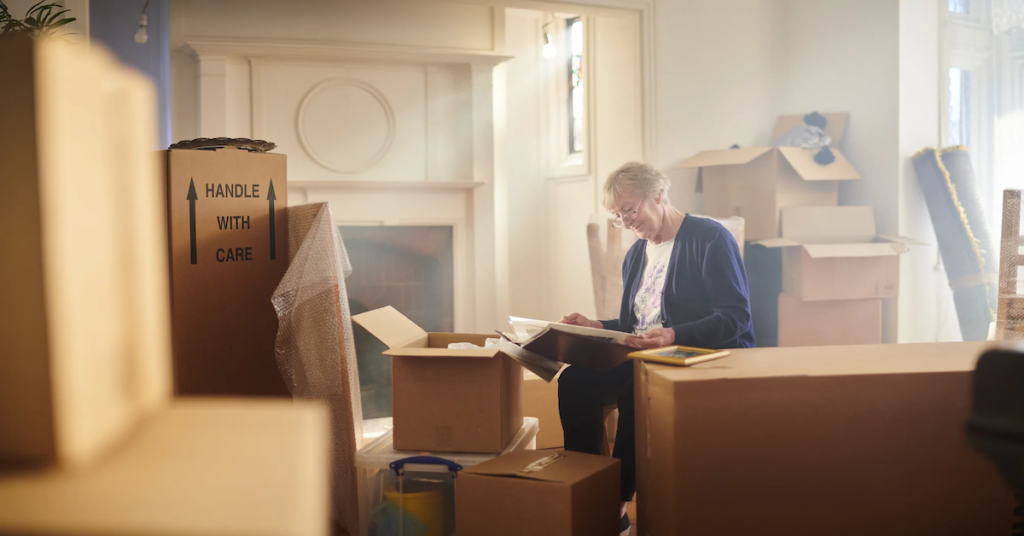Downsizing is something many seniors face at some point in life. Whether it’s moving to a smaller home, a retirement community, or simply reducing clutter in a long-time residence, the process can be overwhelming. It’s not just about getting rid of things; it’s about keeping what truly matters. Deciding what to keep, what to pass on, and what to let go of can be emotionally challenging. However, with some thoughtful planning and an organized approach, it’s possible to downsize without losing the things that are most valuable.

Assess Your Current Living Situation
Before you start packing or selling, take a good look at your current living space. What is essential for your daily life? Consider factors like how much space you actually use, the maintenance your home requires, and the level of accessibility needed as you age. Will your future home require modifications for mobility or safety? These are all important questions to ask yourself as you prepare for the next chapter.
Making a list of your needs and goals for the new space will help you avoid bringing unnecessary items. It’s helpful to think about how you want to live in the future — easier access, fewer stairs, a simpler layout. This exercise will help you stay focused when it’s time to start sorting through your belongings.
Understanding the Emotional Attachment to Possessions
For many people, their possessions hold deep emotional value. The home where you’ve lived for decades is more than just a building; it’s a place where memories were made, and where family milestones were celebrated. It’s completely normal to feel emotionally attached to the things you’ve accumulated over the years. Some items, like family heirlooms, photographs, or gifts, may carry sentimental weight.
Acknowledging the emotional attachment is a crucial step in downsizing. It’s not just about discarding items, it’s about respecting their place in your life. Take the time to reflect on the memories associated with each item before making a decision about what to keep.
Prioritize What’s Most Valuable to You
When it comes time to downsize, it’s helpful to categorize your belongings into essentials, sentimental items, and items that you no longer need. Ask yourself: What do you truly use? What brings you joy? And what has deep personal or family significance? These questions will help you determine which items should stay and which can go.
It’s important to be realistic. You might need to part with items that no longer serve a purpose, but it’s okay to keep what brings comfort and meaning. Prioritize what’s truly valuable to you — this might mean keeping a few beloved items like an antique clock, family photos, or a piece of furniture that has special memories attached to it.
Handling Sentimental Items with Care
When you’re downsizing, sentimental items can be some of the hardest to part with. A family heirloom, a piece of jewelry passed down through generations, or even old keepsakes from your children’s childhood are not just objects — they are part of your family history.
One way to manage sentimental items is by choosing a few key pieces that hold the most meaning. For example, you can keep a small collection of family photographs, while giving away the old furniture that no longer serves a purpose. Another option is to create a memory box, where you can store items that are important to you, but in a more manageable space. You can also digitize old photos or letters to preserve memories without taking up physical space.
If there are items you don’t want to keep but still want to preserve their history, consider passing them down to family members. This can help ensure the items stay in the family while keeping your space decluttered.
Dealing with Items You Don’t Want to Keep
Once you’ve identified what’s valuable and what’s not, the next step is to figure out what to do with the rest. You can donate items to charity, give them to family members, or sell them if they still hold some value. Donating gently used clothing, furniture, and household items is a great way to help others while also lightening your load. Family members might be interested in items that hold sentimental value, so don’t hesitate to offer things that might have meaning to them.
Selling items that still have financial value can help you fund your move or make your new space more comfortable. If you have valuable items, like vintage furniture or collectibles, consider selling them through online marketplaces, local antique shops, or estate sales.
Packing and Organizing for the Move
When the time comes to pack, make sure to organize everything by category. Take it room by room to avoid feeling overwhelmed. A good rule of thumb is to start with things you don’t use daily, like seasonal clothing or decorative items, and work your way towards the essentials.
If you’re hiring movers, be sure to label boxes clearly to ensure everything is packed correctly. Downsizing digitally is another great strategy. Scan important documents, photos, or letters to reduce clutter while still preserving memories.
Making Your New Space Comfortable
Once you’ve moved into your new home, it’s time to make it feel familiar. Decorating your new space with your most treasured belongings can create a sense of comfort and belonging. While your new home might be smaller, you can make it feel warm and inviting by incorporating the items that hold the most meaning.
Consider how to use your new space wisely. Opt for functional furniture and maximize storage to avoid feeling cramped. You can incorporate pieces that bring joy while keeping the space clean and clutter-free.
The Financial Benefits of Downsizing
Downsizing isn’t just about reducing your living space; it’s also a financial opportunity. By selling property or valuable items, you can free up funds for future needs. Moving to a smaller home may reduce ongoing costs like utilities, taxes, and maintenance. It can also provide financial flexibility for healthcare or retirement.
Before making any financial decisions, consider consulting with a financial advisor to ensure you’re making the most of your downsizing efforts.
Involving Family and Community in the Process
Downsizing can be a family affair. Involve your loved ones in the decision-making process to ease the emotional strain and share the responsibility of sorting through items. It can also help to get input from family members when deciding which pieces to keep or pass down.
Additionally, many communities offer downsizing services specifically for seniors. These services can help with sorting, packing, and moving, allowing you to focus on the emotional aspects of the transition.
Conclusion
While downsizing may seem like a daunting task, it can also be a chance to simplify your life and focus on what really matters. By taking the time to prioritize your belongings and carefully consider your emotional attachments, you can downsize without losing the things that are most important to you. Whether it’s a family heirloom, a cherished memory, or simply creating space for the next chapter, downsizing doesn’t mean losing everything — it’s about making room for a life that’s more manageable, fulfilling, and comfortable.
At DMK Metal, we understand the importance of making informed decisions when it comes to downscaling, whether it’s about your possessions or your future goals. We’re here to help you navigate every step of the process with care and clarity.
